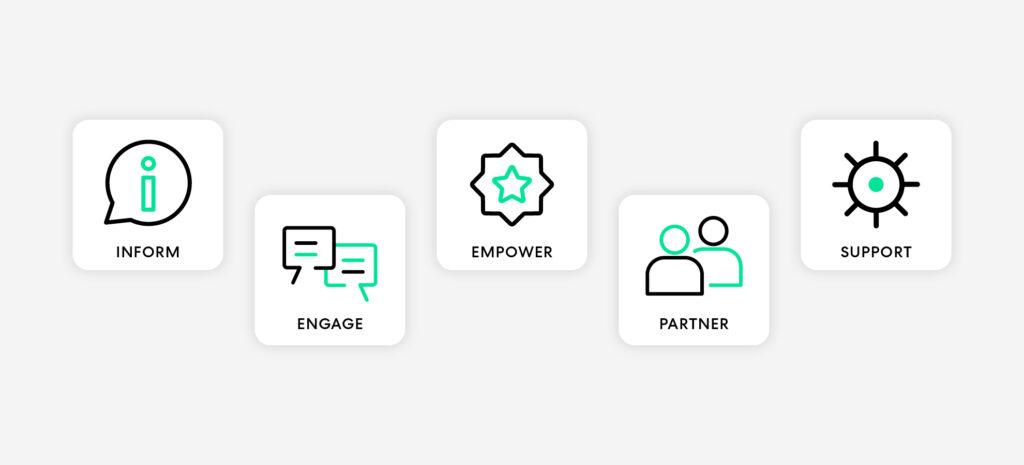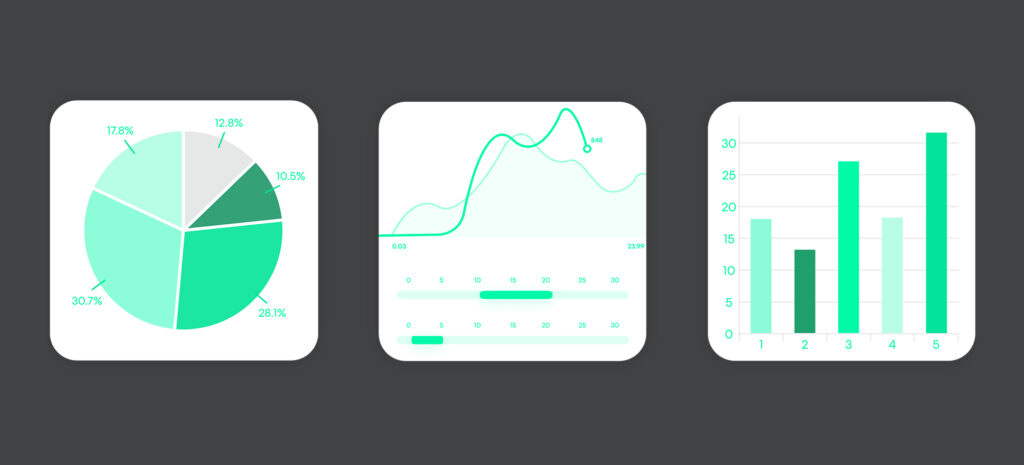Updated October 2023.
The COVID-19 pandemic disrupted many aspects of health care. Some of these included how patients interact with doctors and other healthcare professionals (HCPs), how HCPs interact with each other, and how much emphasis doctors, healthcare organizations, and even pharmaceutical companies place on patient-centered healthcare. This article will discuss potential applications of patient engagement in healthcare, from telehealth to patient-focused drug development.
What is patient engagement?
Patient engagement means actively seeking patient input on a range of topics, including:
- Patient experience, disease state, and treatment pathway
- Clinical trial activities, including protocol design, recruitment, enrollment, and monitoring
- Drug and device development, from pre-clinical to launch and beyond
- Patient advocacy materials and patient education
A healthcare organization seeks patient engagement because patients are best equipped to help HCPs understand the experience of diagnosis, treatment, and living with various health conditions. While patient engagement activities can include telehealth visits to check in on or diagnose minor illnesses, interactions can go much deeper and reveal important insights that can change how treatments are developed and ultimately improve patient outcomes.
Traditionally, patient engagement was conducted exclusively in person, through clinic and hospital visits, trial site activities, or face-to-face focus groups. However, these activities have limitations. Patients may be reluctant to take part in these in-person activities for various reasons:
- Inability to travel for health reasons
- Lack of access to transportation and/or distance to clinic or trial site
- Financial concerns related to transportation or taking time away from work
- Distrust of health/medical establishment
- Reluctance to disclose sensitive medical information, especially in a face-to-face setting
Healthcare organizations can overcome many of these objections with virtual engagement. Telehealth visits are often less stressful and take less time than in-person visits for minor illnesses or certain appointments. Remote monitoring in clinical trials is more convenient for patients and reduces individuals’ chances of discontinuing participation. Patient advisory boards tend to yield a higher volume and quantity of insights when patients can participate anonymously or in private conversations with a moderator.
Prior to the pandemic, the use of digital health tools was waning. Research shows that the use of mobile devices and applications fell from nearly half (48%) using these tools in 2018 to only 35% in 2020. COVID-19 forced a surge in the use of these tools, and during more than a year of virtual-only interaction, many patients either used digital appointments for the first time or came to prefer them over in-person.
But the forced adoption of telemedicine and other services during the extended lockdown, facilitated by relaxed rules by Medicare and other insurers, introduced a vast new user base to the virtual experience…Many providers and patients quickly discovered virtual services to be more attractive than they had imagined. – Accenture
What is a patient engagement framework?
Many healthcare organizations prioritize patient-centricity as part of their corporate mission and values. But execution can be very different from reality – while research reveals that 91% of life science professionals believe patient centricity is a top priority, only about 30% are confident in their companies’ ability to deliver on the promise. For this reason, organizations may use the Patient Engagement Framework to develop and boost patient engagement strategies.
The Patient Engagement Framework is the result of collaboration between over 150 experts in the fields of health care, human behavior, and technology. The framework aims to help healthcare organizations create more efficient and effective models of care, putting patients at the center of the care delivery model. The framework has five stages:
Stage 1: Inform Me
This is the starting point for engagement. The patient is provided with general things, like services and physician directories. In addition to HIPAA notices and advance directives, e-tools such as wellness guidance and prevention are provided. The patient is also educated on care plans, including tests, medicines, and treatment.
Stage 2: Engage Me
This stage is all about getting the patient engaged in their own care. Resources shared with the patient can include things like trackers for pregnancy, diet, or fitness; apps for scheduling follow-up visits or accessing education materials; and patient portals where they can make appointments or refill a prescription.
Stage 3: Empower Me
The third stage is based on retaining and interacting. Patient engagement tools at this stage may include care plan management, secure messaging, and online care help. The patient may also be asked to share data about their health or wellness electronically.
Stage 4: Partner With Me
The patient becomes a true partner at this stage. Healthcare providers can be alerted to which patients require intervention or attention, and resources available to the patient include advanced care planning and more transparent coordination across healthcare providers.
Stage 5: Support My E-Community
Analytics and quality are significant areas of the final stage, with the opportunity for the healthcare organization to analyze the care delivered and the health of the patient panel and compare performance against different healthcare providers. E-visits may be part of the care plan, and patients have access to and can use data related to their health. Community support is established online by recruiting the involvement of the patient’s caregivers, family, friends, clergy, counseling, and other support services.
What is a patient engagement platform?
A patient engagement platform is any digital tool patients use to interact with doctors, healthcare organizations, clinical trial sponsors, or pharmaceutical companies. Many hospital systems use patient-centered technology like proprietary portals or popular apps that allow patients to request appointments, get test results, or take other actions related to their healthcare. Another health system may offer access to telehealth platforms that enable virtual visits with their healthcare provider.
However, true patient engagement – where patients offer feedback and insights about their experiences – should ideally take place on a virtual engagement platform designed to protect patient privacy and keep health organizations compliant with laws and guidelines. Patient engagement platforms should include features such as:
- Ability to blind or double-blind the identities of participants and sponsoring organizations to avoid bias and protect privacy
- Convenience for patients, including the ability to take part on their own schedule
- Time to follow up with additional questions or to clarify answers
- Capacity to upload resources like videos and documents that patients can view and react to
Patient engagement is critical to any life science organization’s insight-gathering strategy. Conducting patient conversations in a secure environment that reassures patients will result in high-quality insights that actually drive strategy, rather than simply collecting yes or no answers that don’t have a meaningful impact.
Does your organization understand the impact of an effective patient engagement strategy? Get our patient engagement best practices to get started with more effective patient interaction.






